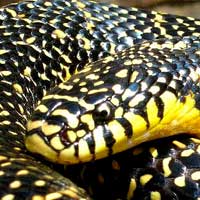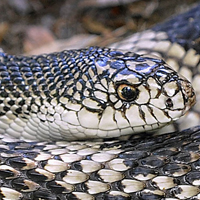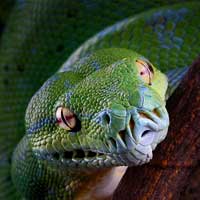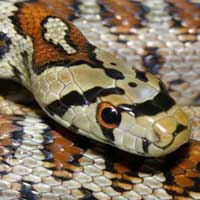Everything You Need to Know About the Brown Sand Boa
The scientific name of the Brown Sand Boa is Eryx johnii, and it belongs to the snake family Boidae.
Scientific Name: Eryx johnii
Snake Family: Boidae
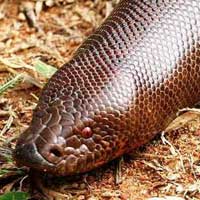
Introduction to the Brown Sand Boa
The Brown Sand Boa (Eryx johnii) is a non-venomous snake belonging to the Boidae family. Native to South Asia, this species is admired for its unique burrowing behavior and docile temperament. It is a small, robust snake with smooth scales and a brownish hue that helps it blend seamlessly into sandy environments. Due to its calm demeanor and manageable size, the Brown Sand Boa has become a popular pet among snake enthusiasts worldwide.
Where Does the Brown Sand Boa Live?
The Brown Sand Boa thrives in dry and semi-arid regions, primarily in India, Pakistan, and Iran. These snakes prefer loose, sandy soils that allow them to burrow and regulate their body temperature. They are often found in grasslands, scrublands, and desert-like areas with sparse vegetation.
To replicate their habitat in captivity:
- Provide a sandy or soil-based substrate for digging and burrowing.
- Maintain temperatures between 75-85°F with a basking spot of 90°F.
- Keep humidity levels low to moderate (30-50%).
- Include hides and decor to mimic a natural environment.
Here’s a quick overview of their habitat needs:
| Habitat Element | Requirement |
|---|---|
| Substrate | Sand or soil |
| Temperature | 75-85°F (basking at 90°F) |
| Humidity | 30-50% |
What Do Brown Sand Boas Eat?
As carnivores, Brown Sand Boas primarily feed on small mammals, birds, and lizards in the wild. In captivity, their diet typically consists of frozen and thawed rodents that are appropriately sized to the snake’s body.
- Juveniles should be fed every 5-7 days.
- Adults can be fed every 10-14 days.
- Ensure the prey size does not exceed the widest part of the snake’s body.
It is important to monitor feeding habits and avoid overfeeding to prevent obesity. After feeding, refrain from handling your snake for at least 48 hours to allow for proper digestion.
Uncovering the Behavior and Temperament of the Brown Sand Boa
The Brown Sand Boa is known for its calm and non-aggressive nature. These snakes are primarily nocturnal and spend much of their time burrowed underground or hidden beneath objects. They are slow-moving and rarely exhibit defensive behavior, even when threatened.
Key behavioral traits include:
- Preference for burrowing and hiding during the day.
- Gentle demeanor, making them easy to handle.
- Lack of defensive displays like hissing or striking.
By providing ample hiding spots and maintaining a stress-free environment, owners can ensure their boa remains healthy and content.
How to Ensure a Healthy and Long Life for Your Brown Sand Boa
With proper care, Brown Sand Boas can live up to 20 years in captivity. However, their health can be impacted by common issues such as respiratory infections, mites, and poor husbandry practices.
Health tips include:
- Maintain proper enclosure temperatures and humidity to prevent respiratory issues.
- Inspect the snake regularly for mites and other parasites.
- Provide a balanced diet to avoid underfeeding or obesity.
Regular veterinary checkups and consistent care are essential to ensure your boa’s well-being and longevity.
The Reproduction Cycle of the Brown Sand Boa
Brown Sand Boas are ovoviviparous, meaning they give birth to live young. Breeding typically occurs in cooler months, with females giving birth to offspring after a gestation period of 4-6 months.
Reproduction facts:
- Females can give birth to 6-12 young per clutch.
- Newborns measure approximately 6-8 inches in length.
- Ensure a stable, stress-free environment during the breeding and gestation periods.
Proper care and preparation are crucial for successful breeding and healthy offspring.
Tips for Handling and Caring for Your Brown Sand Boa
Handling a Brown Sand Boa is simple and safe due to its docile nature. However, proper techniques are necessary to ensure the snake’s comfort and safety.
Handling tips:
- Always support the snake’s body to prevent stress.
- Avoid sudden movements to keep the snake calm.
- Do not handle your boa immediately after feeding.
By practicing gentle and consistent handling, you can build trust with your snake and enjoy a rewarding relationship.



